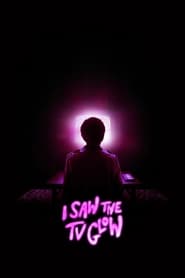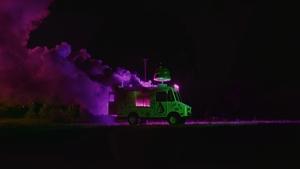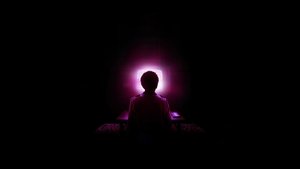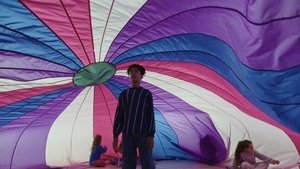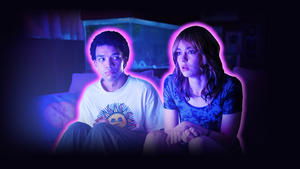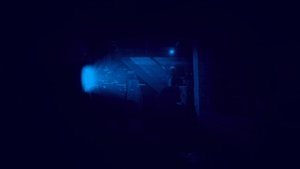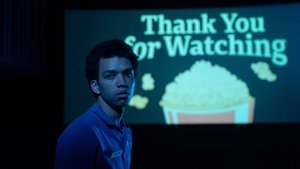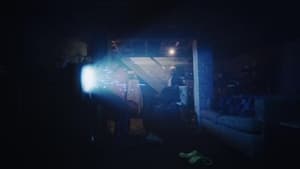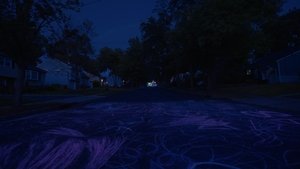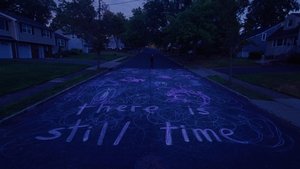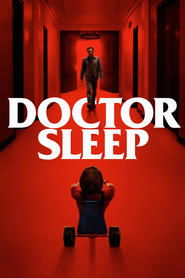One of the buzziest films out of this year’s Sundance class was Jane Schoenbrun’s dense but stirring indie, I Saw the TV Glow. While it’s clear, although not directly spelled out for you, Schoenbrun’s latest explores themes regarding those in and connected to the LBGTQ community so cue the polarization. Yet, what makes the film so poignant and effective is its quest to capture the overarching feelings within these concerned and confused teenage subjects, rather than making a statement about what’s right or wrong. As a trans woman herself, Schoenbrun somehow tackles this still socially taboo topic with restrained reverence and passionate conviction, creating one of the most emotionally complex and visually stunning experiences at this year’s SXSW festival.
Owen (Detective Pikachu’s Justice Smith) and Maddy (Atypical’s Brigette Lundy-Paine) are lonely teenagers at the same school in the mid-90s. When Owen catches Maddy reading a book about a strange new late-night, young-adult television show called “Pink Opaque”, their bond over this mysterious sci-fi program manifests itself into something far greater. Maddy begins to believe that her and Owen have a connection to the show’s main characters, one that goes beyond explanation. But after she mysteriously vanishes from town, leaving Owen to navigate his formative years on his own, Maddy returns years later so that she and Owen can live out the storyline from the show’s final episode.
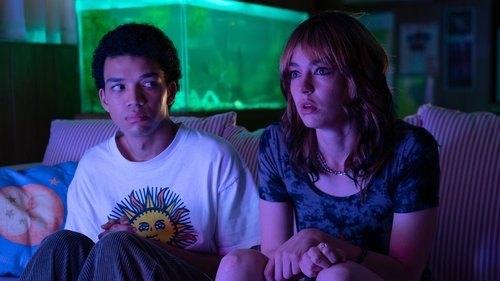
I Saw the TV Glow is an immensely powerful allegory about freeing oneself. The film follows these two youths as they discover a deeper meaning in the episodes of their favorite television show. This inexplicable connection between the teenagers and their beloved TV program serves as a metaphor for those gay and trans youth who feel trapped in their circumstances and bodies. It’s a hypnotic story, framed in a lucid and dreamlike lens that intensifies the intrigue and magnifies the mystery. Thanks to the film’s cryptic narrative structure, I Saw the TV Glow is never feels preachy in its messaging but remains clear in its intention.
Writer and director Jane Schoenbrun has plenty to say about this marginalized community. Maddy is the fearless one, sure of the life she wants and refusing to settle for anything different. Owen, on the other hand, struggles to understand himself. He senses the disconnect between how he feels and how he knows he’s supposed to feel, but he doesn’t know how to respond or what to do. These two different perspectives are examined closely and amplified magnetically. The film not only addresses those in the LBGTQ community who have broken free from the shackles of an unchosen identity or lifestyle, it also shines a light on the lifelong purgatory of those who conform to societal norms and are sentenced to suffer with the internal conflict.

Another impactful aspect of the film resides in its delivery. Owen and Maddy constantly break the fourth wall, narrating the story by staring into the camera and speaking directly to the audience. It works superbly here, building intimacy between their characters and the viewer. Therefore, as the film begins to deeply explore the heartache and personal struggles of our two protagonists, it leaves you no choice but to empathize with their situation.
I Saw the TV Glow will have its detractors, that’s just the type of society we live in. However, you couldn’t ask for a more nuanced and meaningful examination of what it feels like to grow up different from those around you and how that struggle may never end unless you choose to do something about it.
-
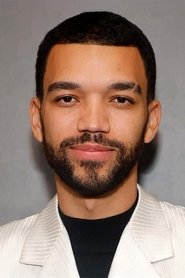 NameJustice SmithCharacterOwen
NameJustice SmithCharacterOwen -
 NameJack HavenCharacterMaddy
NameJack HavenCharacterMaddy -
 NameIan ForemanCharacterYoung Owen
NameIan ForemanCharacterYoung Owen -
 NameHelena HowardCharacterIsabel
NameHelena HowardCharacterIsabel -
 NameLindsey JordanCharacterTara
NameLindsey JordanCharacterTara -
 NameDanielle DeadwylerCharacterBrenda
NameDanielle DeadwylerCharacterBrenda -
 NameFred DurstCharacterFrank
NameFred DurstCharacterFrank -
 NameConner O'MalleyCharacterDave
NameConner O'MalleyCharacterDave -
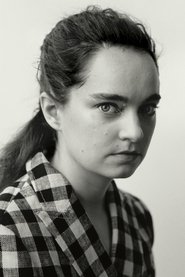 NameEmma PortnerCharacterAmanda / Mr. Melancholy / Marco / Evil Clown
NameEmma PortnerCharacterAmanda / Mr. Melancholy / Marco / Evil Clown -
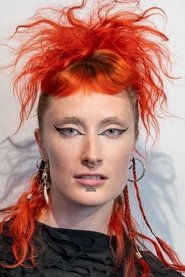 NameMadaline RileyCharacterPolo
NameMadaline RileyCharacterPolo -
 NameAmber BensonCharacterJohnny Link's Mom
NameAmber BensonCharacterJohnny Link's Mom -
 NameAlbert BirneyCharacterMr. Sprinkly
NameAlbert BirneyCharacterMr. Sprinkly -
 NameMichael C. MaronnaCharacterNeighbor 1
NameMichael C. MaronnaCharacterNeighbor 1 -
 NameDanny TamberelliCharacterNeighbor 2
NameDanny TamberelliCharacterNeighbor 2 -
 NameTimothy AllanCharacterLance
NameTimothy AllanCharacterLance -
 NameTyler Dean FloresCharacterCade
NameTyler Dean FloresCharacterCade -
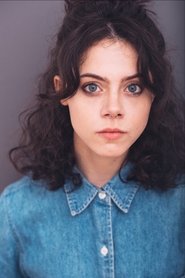 NameElizabeth ScopelCharacterDrive-Thru Kid
NameElizabeth ScopelCharacterDrive-Thru Kid -
 NameMarlyn BandieroCharacterBrenda's Friend
NameMarlyn BandieroCharacterBrenda's Friend -
 NameHaley DahlCharacterSloppy Jane Band Member
NameHaley DahlCharacterSloppy Jane Band Member -
 NameRaina BlockCharacterSloppy Jane Band Member
NameRaina BlockCharacterSloppy Jane Band Member -
 NameBailey WollowitzCharacterSloppy Jane Band Member
NameBailey WollowitzCharacterSloppy Jane Band Member -
 NameLily RothmanCharacterSloppy Jane Band Member
NameLily RothmanCharacterSloppy Jane Band Member -
 NamePhoebe BridgersCharacterPhoebe Bridgers
NamePhoebe BridgersCharacterPhoebe Bridgers -
 NameKris EsfandiariCharacterKing Woman Band Member
NameKris EsfandiariCharacterKing Woman Band Member -
 NameWilson FloresCharacterKing Woman Band Member
NameWilson FloresCharacterKing Woman Band Member -
 NameThommy NorthcutCharacterKing Woman Band Member
NameThommy NorthcutCharacterKing Woman Band Member -
 NameJulie LodhyCharacterKing Woman Band Member
NameJulie LodhyCharacterKing Woman Band Member -
 NameKenneth Kyle MartinezCharacterCharlie's Father (uncredited)
NameKenneth Kyle MartinezCharacterCharlie's Father (uncredited)
-
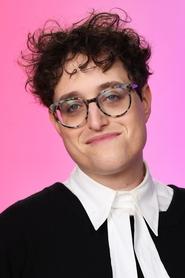 NameJane SchoenbrunJobDirector
NameJane SchoenbrunJobDirector -
 NameAlex GJobOriginal Music Composer
NameAlex GJobOriginal Music Composer -
 NameJane SchoenbrunJobWriter
NameJane SchoenbrunJobWriter -
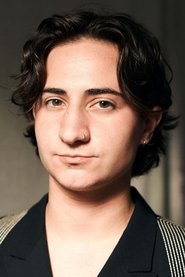 NameLuca IntiliJobProducer
NameLuca IntiliJobProducer -
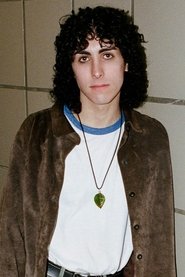 NameHeather LandsmanJobProduction Assistant
NameHeather LandsmanJobProduction Assistant -
 NameNaomi MunroJobArt Direction
NameNaomi MunroJobArt Direction -
 NameRay CintronJobMakeup Artist
NameRay CintronJobMakeup Artist -
 NameElla ThompsonJobAssistant Art Director
NameElla ThompsonJobAssistant Art Director -
 NameEric K. YueJobDirector of Photography
NameEric K. YueJobDirector of Photography -
 NamePaige MitchellJobSet Decoration
NamePaige MitchellJobSet Decoration -
 NameRachel Dainer-BestJobCostume Design
NameRachel Dainer-BestJobCostume Design -
 NameAaron WormanJobMakeup Department Head
NameAaron WormanJobMakeup Department Head -
 NameSofi MarshallJobEditor
NameSofi MarshallJobEditor -
 NameBrandon Tonner-ConnollyJobProduction Design
NameBrandon Tonner-ConnollyJobProduction Design -
 NameJason FinkJobSet Dresser
NameJason FinkJobSet Dresser -
 NameFrances H. SmithJobSet Decoration Buyer
NameFrances H. SmithJobSet Decoration Buyer -
 NameJohn J. BudionJobVFX Artist
NameJohn J. BudionJobVFX Artist -
 NameFrancesca M. CarusoJobAssistant Set Decoration
NameFrancesca M. CarusoJobAssistant Set Decoration -
 NameDaniel TimmonsJobSound Re-Recording Mixer
NameDaniel TimmonsJobSound Re-Recording Mixer -
 NameJennifer DiLulloJobPost Production Supervisor
NameJennifer DiLulloJobPost Production Supervisor -
 NameAlex SolorzanoJobSpecial Effects Makeup Artist
NameAlex SolorzanoJobSpecial Effects Makeup Artist -
 NameJared BiunnoJobVisual Effects Producer
NameJared BiunnoJobVisual Effects Producer -
 NameManny LemusJobSpecial Effects Makeup Artist
NameManny LemusJobSpecial Effects Makeup Artist -
 NameNorman DouglassJobUtility Stunts
NameNorman DouglassJobUtility Stunts -
 NameMaggie AmbroseJobUnit Production Manager
NameMaggie AmbroseJobUnit Production Manager -
 NameSun RollerJobArt Department Coordinator
NameSun RollerJobArt Department Coordinator -
 NameHeather MonettiJobBoom Operator
NameHeather MonettiJobBoom Operator -
 NameAshley K. ThomasJobSpecial Effects Makeup Artist
NameAshley K. ThomasJobSpecial Effects Makeup Artist -
 NameRicky MosonJobProperty Master
NameRicky MosonJobProperty Master -
 NameJohn SeubertJobLeadman
NameJohn SeubertJobLeadman -
 NameAbigael KurtzJobVFX Artist
NameAbigael KurtzJobVFX Artist -
 NameMargaret GalvinJobKey Costumer
NameMargaret GalvinJobKey Costumer -
 NameGreg RonayneJobLocation Scout
NameGreg RonayneJobLocation Scout -
 NameChris CumberbatchJobCharge Scenic Artist
NameChris CumberbatchJobCharge Scenic Artist -
 NameAngel Yolanda Antoinette SmithJobScenic Artist
NameAngel Yolanda Antoinette SmithJobScenic Artist -
 NameAarif AttarwalaJobCompositing Lead
NameAarif AttarwalaJobCompositing Lead -
 NameZeren LondahJobDolly Grip
NameZeren LondahJobDolly Grip -
 NameMia FlanaganJobAssistant Costume Designer
NameMia FlanaganJobAssistant Costume Designer -
 NameDaniela MartellaJobLocation Manager
NameDaniela MartellaJobLocation Manager -
 NameArjan MirandaJobMusic Editor
NameArjan MirandaJobMusic Editor -
 NameZach RubinJobAdditional Camera
NameZach RubinJobAdditional Camera -
 NameCorey PatrickJobAssistant Location Manager
NameCorey PatrickJobAssistant Location Manager -
 NameMaricela NodarJobKey Costumer
NameMaricela NodarJobKey Costumer -
 NameCamille CushmanJobWardrobe Assistant
NameCamille CushmanJobWardrobe Assistant -
 NameRashedia RogersJobLocation Assistant
NameRashedia RogersJobLocation Assistant -
 NameChris NavarroJobADR Mixer
NameChris NavarroJobADR Mixer -
 NameErica EnsmingerJobKey Makeup Artist
NameErica EnsmingerJobKey Makeup Artist -
 NameBrian WalshJobSpecial Effects Coordinator
NameBrian WalshJobSpecial Effects Coordinator -
 NameLuke ProvenzanoJobBest Boy Electric
NameLuke ProvenzanoJobBest Boy Electric -
 NameAnurag MasseyJobMix Technician
NameAnurag MasseyJobMix Technician -
 NameCeleste BlackJobCostumer
NameCeleste BlackJobCostumer -
 NameChris SwansonJobMusic Supervisor
NameChris SwansonJobMusic Supervisor -
 NameAbby GoyeaJobElectrician
NameAbby GoyeaJobElectrician -
 NamePaul LuzziJobGrip
NamePaul LuzziJobGrip -
 NameSpencer PazerJobStill Photographer
NameSpencer PazerJobStill Photographer -
 NameDevin SmithJobScript Supervisor
NameDevin SmithJobScript Supervisor -
 NameJessica BerndtJobMusic Supervisor
NameJessica BerndtJobMusic Supervisor -
 NameKevin KellyJobExecutive Producer
NameKevin KellyJobExecutive Producer -
 NameSarah WinshallJobProducer
NameSarah WinshallJobProducer -
 NameEmma StoneJobProducer
NameEmma StoneJobProducer -
 NameAli HertingJobProducer
NameAli HertingJobProducer -
 NameDave McCaryJobProducer
NameDave McCaryJobProducer -
 NameTim KornJobSound Designer
NameTim KornJobSound Designer -
 NameElias ZXJobProduction Assistant
NameElias ZXJobProduction Assistant -
 NameTim KornJobSupervising Sound Editor
NameTim KornJobSupervising Sound Editor -
 NameJoseph GrundfastJobVFX Artist
NameJoseph GrundfastJobVFX Artist -
 NameMila MatveevaJobTitle Designer
NameMila MatveevaJobTitle Designer -
 NameJanna EmigJobAssistant Editor
NameJanna EmigJobAssistant Editor -
 NameEmma WarrenJobCasting Assistant
NameEmma WarrenJobCasting Assistant -
 NameAdriana AlpizarJobProduction Secretary
NameAdriana AlpizarJobProduction Secretary -
 NameElise RavenJobCasting Assistant
NameElise RavenJobCasting Assistant -
 NameEd GatelyJobProduction Accountant
NameEd GatelyJobProduction Accountant -
 NameAryian ThehammelJobMusic Editor
NameAryian ThehammelJobMusic Editor -
 NameRich GilbertoJobPayroll Accountant
NameRich GilbertoJobPayroll Accountant -
 NameTaylor ShungJobExecutive Producer
NameTaylor ShungJobExecutive Producer -
 NameRyan ColemanJobKey Grip
NameRyan ColemanJobKey Grip -
 NameLucy DacusJobThanks
NameLucy DacusJobThanks -
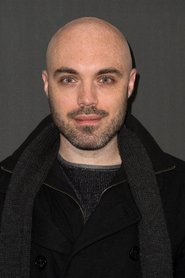 NameDavid LoweryJobThanks
NameDavid LoweryJobThanks -
 NameJulia ShirarJobSound Editor
NameJulia ShirarJobSound Editor -
 NameChris WhiteJobFoley Mixer
NameChris WhiteJobFoley Mixer -
 NameSachi BahraJobSecond Unit Director of Photography
NameSachi BahraJobSecond Unit Director of Photography -
 NameCurtis HendersonJobFoley Artist
NameCurtis HendersonJobFoley Artist -
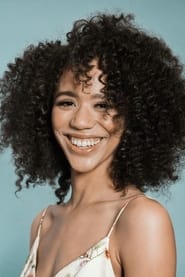 NameJasmin Savoy BrownJobThanks
NameJasmin Savoy BrownJobThanks -
 NameNick TimmonsJobCamera Operator
NameNick TimmonsJobCamera Operator -
 NameSachi BahraJob"A" Camera Operator
NameSachi BahraJob"A" Camera Operator -
 NameChris WhiteJobFoley Editor
NameChris WhiteJobFoley Editor -
 NameDaniel Patrick CarboneJobThanks
NameDaniel Patrick CarboneJobThanks -
 NameKyle ParsonsJobSteadicam Operator
NameKyle ParsonsJobSteadicam Operator -
 NameShaun BrennanJobFoley Artist
NameShaun BrennanJobFoley Artist -
 NameJourdain SearlesJobThanks
NameJourdain SearlesJobThanks -
 NameLeslie BloomeJobFoley Artist
NameLeslie BloomeJobFoley Artist -
 NameDustin Guy DefaJobThanks
NameDustin Guy DefaJobThanks -
 NameAngela ArgeseJobProduction Assistant
NameAngela ArgeseJobProduction Assistant -
 NamePaige Melisande LecomerJobProduction Assistant
NamePaige Melisande LecomerJobProduction Assistant -
 NameLaVar JamesJobProduction Assistant
NameLaVar JamesJobProduction Assistant -
 NamePatriciana TenicelaJobDigital Intermediate Producer
NamePatriciana TenicelaJobDigital Intermediate Producer -
 NameTim Shannon Jr.JobTransportation Captain
NameTim Shannon Jr.JobTransportation Captain -
 NameSavey CatheyJobExecutive In Charge Of Production
NameSavey CatheyJobExecutive In Charge Of Production -
 NameTori WongJobHealth and Safety
NameTori WongJobHealth and Safety -
 NameScott EttinJobData Management Technician
NameScott EttinJobData Management Technician -
 NameWind VachotenskyJobProduction Assistant
NameWind VachotenskyJobProduction Assistant -
 NameEvan CathcartJobProduction Coordinator
NameEvan CathcartJobProduction Coordinator -
 NameBogdan MihajlovicJobMatchmove Supervisor
NameBogdan MihajlovicJobMatchmove Supervisor -
 NameStefan DubajicJob3D Modeller
NameStefan DubajicJob3D Modeller -
 NameJessica MossJobSongs
NameJessica MossJobSongs -
 NameEmily HainesJobSongs
NameEmily HainesJobSongs -
 NameBrendan CanningJobSongs
NameBrendan CanningJobSongs -
 NameCharles SpearinJobSongs
NameCharles SpearinJobSongs -
 NameFrances QuinlanJobSongs
NameFrances QuinlanJobSongs -
 NamePhoebe BridgersJobSongs
NamePhoebe BridgersJobSongs -
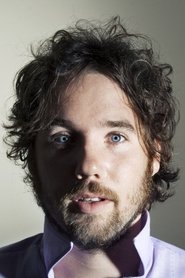 NameKevin DrewJobSongs
NameKevin DrewJobSongs -
 NameJohn CrossinghamJobSongs
NameJohn CrossinghamJobSongs -
 NameEmily A. SpragueJobSongs
NameEmily A. SpragueJobSongs -
 NameCaroline PolachekJobSongs
NameCaroline PolachekJobSongs -
 NameKyle PulleyJobSongs
NameKyle PulleyJobSongs -
 NameJames ShawJobSongs
NameJames ShawJobSongs -
 NameJustin PeroffJobSongs
NameJustin PeroffJobSongs -
 NameA. G. CookJobSongs
NameA. G. CookJobSongs -
 NameHaley DahlJobSongs
NameHaley DahlJobSongs -
 NameBen Chapoteau-KatzJobSongs
NameBen Chapoteau-KatzJobSongs -
 NameGenevieve DeGrootJobSongs
NameGenevieve DeGrootJobSongs -
 NameBethany SerpicoJobSpecial Effects Makeup Artist
NameBethany SerpicoJobSpecial Effects Makeup Artist -
 NameL'RainJobSongs
NameL'RainJobSongs -
 NameNatalija NikolicJob3D Modeller
NameNatalija NikolicJob3D Modeller -
 NameMaria Bobbitt-ChertockJobSongs
NameMaria Bobbitt-ChertockJobSongs -
 NameAndrew LappinJobSongs
NameAndrew LappinJobSongs -
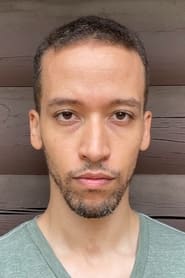 NameWarren E. HullJobStunt Double
NameWarren E. HullJobStunt Double -
 NameJeff PinedoJobSecond Second Assistant Director
NameJeff PinedoJobSecond Second Assistant Director -
 NameCarly KrimJobSecond Assistant Director
NameCarly KrimJobSecond Assistant Director -
 NameGeraldine BarónJobCasting
NameGeraldine BarónJobCasting -
 NameStacie RathboneJobStunt Double
NameStacie RathboneJobStunt Double -
 NameYuval LevyJobVisual Effects Supervisor
NameYuval LevyJobVisual Effects Supervisor -
 NameDan BrickerJobSound Mixer
NameDan BrickerJobSound Mixer -
 NameBrandon Alan SmithJobStunt Coordinator
NameBrandon Alan SmithJobStunt Coordinator -
 NameWilly McGeeJobFirst Assistant Director
NameWilly McGeeJobFirst Assistant Director -
 NameDerrick KollockJobHair Department Head
NameDerrick KollockJobHair Department Head -
 NameAbby HarriJobCasting
NameAbby HarriJobCasting -
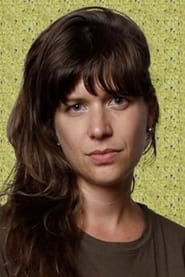 NameSalome OggenfussJobCasting
NameSalome OggenfussJobCasting -
 NameDamali RossJobStunt Double
NameDamali RossJobStunt Double -
 NameMatthew AtwoodJobGaffer
NameMatthew AtwoodJobGaffer -
 NameLowri BestJobWardrobe Supervisor
NameLowri BestJobWardrobe Supervisor -
 NameJon JenkinsJobBTS Videographer
NameJon JenkinsJobBTS Videographer -
 NameJeff PinedoJobSecond Unit First Assistant Director
NameJeff PinedoJobSecond Unit First Assistant Director -
 NameHelena Hirschfeld WilliamsJobAdditional Hairstylist
NameHelena Hirschfeld WilliamsJobAdditional Hairstylist -
 NameKristen LynetJobAdditional Hairstylist
NameKristen LynetJobAdditional Hairstylist -
 NameBrooks FinnieJobBest Boy Grip
NameBrooks FinnieJobBest Boy Grip -
 NameCherelle CargillJobADR Voice Casting
NameCherelle CargillJobADR Voice Casting -
 NameEarl DavisJobLoader
NameEarl DavisJobLoader -
 NameDahlia DennisonJobLoader
NameDahlia DennisonJobLoader -
 NameEmma WoffordJobElectrician
NameEmma WoffordJobElectrician -
 NameMike MiliaJobJimmy Jib Operator
NameMike MiliaJobJimmy Jib Operator -
 NameGerry OrzJobVisual Effects Coordinator
NameGerry OrzJobVisual Effects Coordinator -
 NameVico SharabaniJobVisual Effects Supervisor
NameVico SharabaniJobVisual Effects Supervisor -
 NameSamantha DiazJobVFX Artist
NameSamantha DiazJobVFX Artist -
 NameDanielle LampoJobMakeup Artist
NameDanielle LampoJobMakeup Artist -
 NameIzzi GalindoJobSpecial Effects Makeup Artist
NameIzzi GalindoJobSpecial Effects Makeup Artist -
 NameEva VictorJobThanks
NameEva VictorJobThanks -
 NameDaniel CeroneJobHair Department Head
NameDaniel CeroneJobHair Department Head -
 NameBartees StrangeJobSongs
NameBartees StrangeJobSongs -
 NameLisa ThomasJobAdditional Hairstylist
NameLisa ThomasJobAdditional Hairstylist -
 NameTiffany ParksJobAdditional Hairstylist
NameTiffany ParksJobAdditional Hairstylist -
 NameIkeyia PJobAdditional Hairstylist
NameIkeyia PJobAdditional Hairstylist -
 NameAshley WaldronJobGraphic Designer
NameAshley WaldronJobGraphic Designer


